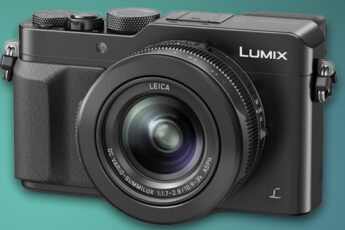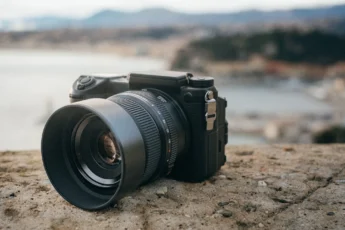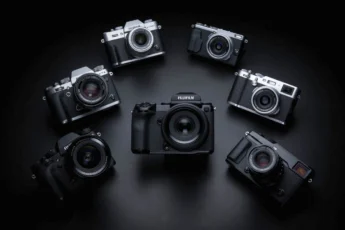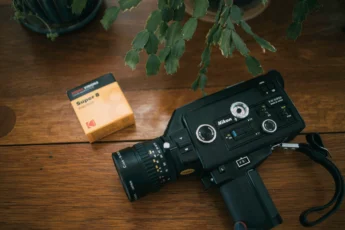Panasonic’s mirrorless camera selection caters to photographers that also like to dabble in videography. And the Panasonic LUMIX GX85 offers plenty to satisfy budget-oriented users while still providing the features one expects in higher end cameras. Let’s have a look at this highly capable pocket-sized marvel.
Are you ready to buy this camera? Click here to purchase the Panasonic LUMIX GX85.
- Technical Specifications
- Build Quality
- Image Quality
- Sensor Resolution and Area
- No Anti-Aliasing Filter
- Depth from Defocus Autofocus System
- What additional features does the Panasonic LUMIX GX85 have?
- 4K Photo Modes
- Image Stabilization
- Other Features
- How does the Panasonic LUMIX GX85 compare to the Olympus OM-D E-M10 Mark III?
- Advantages of the Panasonic LUMIX GX85
- Advantages of the Olympus OM-D E-M10 Mark III
- How does the Panasonic LUMIX GX85 compare to the Panasonic LUMIX G85?
- Who is the Panasonic LUMIX GX85 for?
- Sample Images
- Conclusion
Technical Specifications
- Price: $597.99
- Kit Lens: 12-32mm f/3.5-5.6 MEGA OIS G. VARIO lens. “MEGA OIS” refers to the Optical Image Stabilization built into the lens. And G. VARIO is the name for this collection of Panasonic lenses.
- Sensor: 16 MP sensor (Micro 4/3rds sized 17.3 x 13.0 mm)
- Number of Autofocus Points: 49 Contrast Detection AF points. Contrast detection measures how rapidly pixels in an image change from bright to dark.
- Built-In Flash: Yes with 4.2 meter (13.8 foot) range at ISO 100. Increasing the light sensitivity will increase the flash detection range.
- Continuous Shooting: 8 frames per second
- ISO Range: 200-25,600 with digital drop to 100. A digital drop is a form of improved noise control. It is useful for capturing clear pictures in especially bright lighting.
- Video Recording Capability: 4K 3840×2160 (30, 24 fps), Full HD 1920×1080 (60, 30, 24 fps), HD 1280×720 (30 fps), SD 640×480 (30 fps)
- Image Format: JPEG and RAW. JPEG is the image format most often used by computers and smart devices. It’s a compressed format, which means JPEGs take up less space in memory. RAW files contain all of the original camera data. They are much larger as a result and can only be read with specialized software. But they are the best format for image editing and format conversions.
- Wireless Connectivity: Yes; Wi-Fi and QR (quick response) scan. Smart devices with QR scanning apps can use the complex picture code to sync with the camera wirelessly. With the Panasonic Image App for Android and iOS, the user can remote control the camera. The Image App can also be used to copy images directly to your smart device.
- Supported Memory Cards: SD, SDHC, SDXC, UHS-I
- Battery Life (CIPA Rating): 290 images per charge
- Weight: 426 g (0.94 lb / 15.03 oz)
- Dimensions: 122 x 71 x 44 mm (4.8 x 2.8 x 1.73 in)
Build Quality
The LUMIX GX85 has a slim profile and weighs less than a pound with the battery. The body is composed entirely of composite plastic with a leather texture around the front and handgrip. However, the exposure control and mode dials are metal with textured outer edges. With only two major control dials, the GX85 has a simplified design that appeals to many photographers. The 3-inch touchscreen tilts up and down for creative photography angles but is not fully articulating. The handgrip is shallow but adequate for its size, giving it a firm feel without adding too much bulk.
The GX85 also comes with an electronic viewfinder. Many mirrorless cameras of this price tier use only the LCD for viewing and scene composition. The EVF allows the user to compose photos by looking through an eyepiece with an electronic display. But the GX85 user can also use the touchscreen LCD to view images and video if desired. The GX85 does not have microphone or headphone ports, making it more of a casual videography camera. But the hot shoe can be used to connect a separate mic or flash unit if necessary.
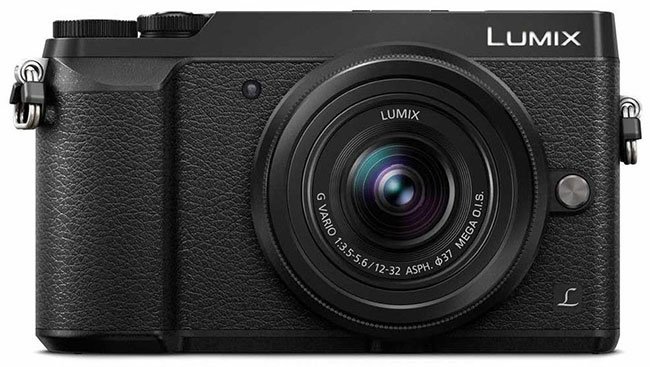
Image Quality
Sensor Resolution and Area
The 16 megapixel sensor of the LUMIX GX85 is Micro 4/3rds sized (17.4 by 13.0 mm). While larger than the sensors of most point-and-shoot cameras (12.8 x 9.6 mm and smaller), 4/3rds sensors are smaller than APS-C (23.6 x 15.6 mm) and full-frame sensors (36 x 24 mm). But the megapixel count is also less than the usual 20-24 MP of these larger sensors. At first, this seems like a downside. However, the individual pixels of the GX85 are no smaller than those of a larger sensor with a higher MP count. Therefore, in terms of sheer pixel quality, Micro 4/3rds sensors are just as good as larger sensors. What’s different is the sheer number of pixels per image. And that only matters if you intend to create large prints or crop images. 16 MP allows you to print photos up to 11″ x 16″ at 300 pixels per inch.
The disadvantages of Micro 4/3rds sensors center around the fact that they collect less light. For starters, they don’t allow as much depth of field control as a larger sensor. Depth of field is how much of a scene is in focus. Full-frame sensors can better create wafer-thin areas of sharp focus and extremely smooth background blur. Larger sensors also have better dynamic range. Dynamic range is the difference in light intensity from the darkest shadows to the brightest highlights. Lastly, larger sensor sizes give superior noise control thanks to the larger amounts of light collected. But larger sensors also require larger camera bodies, and use more power. Micro 4/3rds sensors are a good compromise between size and image quality.
No Anti-Aliasing Filter
The GX85 is the first Panasonic camera with no anti-aliasing filter. Anti-aliasing filters are useful because they help eliminate moiré patterns. Moiré show up as errors in photographs with repeating fine patterns, such as feathers or clothing. But because the filter can’t be turned off, they reduce the overall camera resolution. And not every photographer takes large numbers of pictures where moiré is a constant problem. With the GX85, the AA filter is gone and the Venus Engine image processor intelligently detects and eliminates moiré. Panasonic claims the removal of the low-pass filter gives the GX85 10% more resolution than a Micro 4/3rds sensor with one.
Depth from Defocus Autofocus System
The two major types of autofocus are contrast and phase detection. Contrast is how quickly portions of a scene change from light to dark. The camera pans the lens in-and-out to find the setting that creates maximum image contrast. But because the camera has to “hunt” with the lens, it’s slower than phase detection. Meanwhile, phase detection uses paired AF points. Each pair can detect differences in the phase of light reaching them. If the pairs detect differences between them, the camera will adjust the lens focus until they match. This is a faster process but not as accurate. This makes a big difference with precision focusing styles like portrait and macro photography.
The Panasonic LUMIX GX85 uses a purely contrast detection based autofocus system. But this system has an interesting twist to it. The depth of defocus system of the GX85 uses preloaded lens and image data to help it find focus faster. Specifically, it studies the bokeh (the out of focus artifacts) created by the lens as well as image contrast. By analyzing the bokeh (the “defocus”), the camera can find optimum contrast faster than traditional systems. But this also means that cross brand lenses won’t have the speed of DFD autofocus.

What additional features does the Panasonic LUMIX GX85 have?
4K Photo Modes
Panasonic offers a very unique set of tools that blends the line between photography and videography. The 4K Photo modes of the allow the user to use the flexibility of 4K video recording to create photos. There are several modes, including Burst, Pre-Burst, and Start/Stop. But they all have to do with timing. If the photographer knows a photo-worthy moment is about to happen but not when, they can shoot a 4K video instead. After the video has been taken, the user can then select the frames they want, and save them as JPEG files.
One downside is that the 4K photos are 8 megapixels instead of the full 16 the camera normally takes. If you intend to make prints, that’s a very limiting resolution. Second, because the 4K photo modes are JPEG only, you lose out on RAW’s higher image quality. The 4K burst photo modes are excellent for capturing a precise moment during casual shoots. But with their lower image quality, these modes are not replacements for burst mode photography.
The GX85 also features Post-Focus and 4K Focus Stacking (available with firmware updates). Both of these modes are meant to be used with still subjects, so a tripod is required. With post-focus, the camera takes a short 4K video. And as the video records, the camera adjusts its focus across the entire scene. In a scene with multiple objects, you can select a single frame that has the right subject in sharp focus. Or, if you only have a single subject, you can choose the frame that’s precisely where you want the focus to be. Post-focus is sort of an “automatic” manual focus. It gives you the advantage of further precision at the cost of image quality. But regular manual focus is generally the better choice.
4K Focus Stacking is much more interesting. As with post-focus mode, the GX85 takes a short 4K video and sweeps its focus across the scene. The user can then select a number of portions of the image they want in sharp focus and merge them together. Using 4K focus stacking on a flower, the photographer can select the sections containing the flower and exclude the background. The camera will then take data from every frame containing the flower in sharp focus. Then it will merge them with all of the frames containing background blur data. Assuming you used a tripod, the result is a tremendously sharp flower and a finely blurred background. 4K focus stacking is a nice budget macro photography option, even if it’s limited to still subjects.
Image Stabilization
The GX85 offers 5-axis image stabilization built into the image sensor. Image stabilization corrects for the tiny motions the photographer can make while shooting handheld. Shaky hands, mechanical shutters, or even an unstable place to stand can cause blur in photographs. The GX85 offers four stops of image stabilization. Each “stop” of light, whether it’s shutter speed, aperture, or ISO, is a doubling or halving of the amount of light exposure. Image stabilization specifically impacts shutter speed.
So an IS that offers “four stops” means I can use a shutter speed four stops slower than a camera with no IS. Say I have to use 1/1000ths of a second for a given scene. With the IS of the GX85, I can instead use 1/60ths of a second with the same chance of blur. This sensor stabilization works together with the in-lens image stabilization built into Panasonic mirrorless lenses. If you decide to use an Olympus or other non-Panasonic lens, the IS of the GX85 may not work as well as with a Panasonic lens. The GX85’s image stabilization can also be used during 4K video shooting.
Other Features
The LUMIX GX85 can record 4K video, which is the highest quality video resolution for cameras of this price tier. It also has an electronic shutter, which allows the camera to be operated silently. Wildlife, street, and event photographers will find themselves using this mode regularly.
The GX85 also offers focus peaking when using manual focus. Focus peaking gives the edges of a subject a colored tint when they’re in sharp focus. For example, using peaking, the eyes of a subject would show a colored ring when it’s in perfect focus. Overall, the LUMIX GX85 offers an excellent selection of options for precision image and video capture.
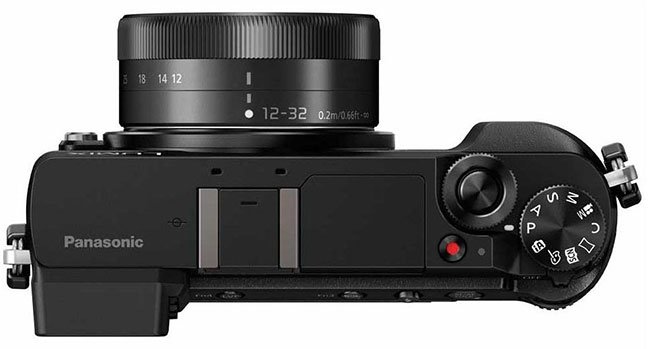
How does the Panasonic LUMIX GX85 compare to the Olympus OM-D E-M10 Mark III?
Both of these entry-intermediate level mirrorless cameras are full of great options, and are very reasonably priced. The Olympus OM-D E-M10 Mark III is currently priced at from $499.00 with kit lens. They also have built-in 5-axis image stabilization that works together with same brand lenses. They both offer 16 megapixel Micro 4/3rds sensors and 4K video recording. Micro 4/3rds lenses can be used with either brand, so the two cameras have over 90 lenses available to use. Clearly you can’t go wrong with either camera. But how do they match up with each other?
Advantages of the Panasonic LUMIX GX85
4K Photo Modes: These 4K video-photography modes allow the user to flexibly select the perfect frame from a recorded video.
Advantages of the Olympus OM-D E-M10 Mark III
Live Composite Mode: This is Olympus’s unique creativity option. Live Composite mode allows the photographer to create a composite image. Using a tripod, the camera first takes a baseline image. Then it takes a preset number of images within a certain timeframe. Every time the camera takes an image, it adds any new brightly exposed pixels to the original baseline image. Live Composite mode is perfect for users looking to create star trails or place multiple fireworks bursts in a single photo. And all without extra computer software.
Autofocus Points: With 121 autofocus points, the Mark III has 72 more than the LUMIX GX85.
Battery Life: At 330 shots per charge, the Mark III has over 10% more stamina than the LUMIX GX85 (290 shots per charge).
UHS-II Compatibility: The Mark III can record data on the fastest cards available, while the GX85 can use up to UHS-I speed. This makes it a better choice when recording 4K video and burst photography, because memory card write speed is important in these scenarios.
Between the creative photo modes, Live Composite Mode is arguably more interesting than the 4K Photo modes of the LUMIX GX85. Most of what the 4K Photo modes offer can be done with continuous burst or manual focus. However, the 4K Photo modes undeniably make these kinds of captures far easier. The two cameras have similar features and image quality. But for the same price, the E-M10 Mark III delivers a few extra perks that make it slightly more attractive.
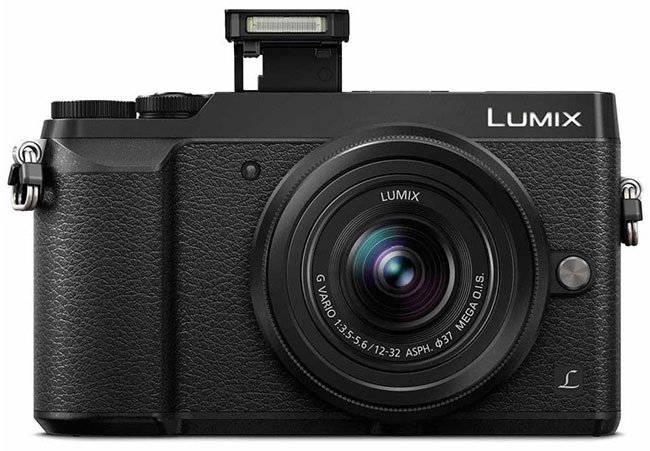
How does the Panasonic LUMIX GX85 compare to the Panasonic LUMIX G85?
As nice as the LUMIX GX85 is, the LUMIX G85 is also worth considering. Both mirrorless cameras have 16-megapixel Micro 4/3rds sensors. They also have Dual image stabilization, 4K Photo modes, and DFD autofocus systems. But the G85 has a more traditional, bulky DSLR styling, and weighs 79 grams more than the GX85 (505 vs 426 g). The G85 also has a fully weatherized, dust and splash-proof magnesium-alloy body. The handgrip is also more robust compared to the slim GX85. Together, these features make the G85 a much safer choice for outdoor-oriented photographers.
The G85 comes with a separate drive dial for single, burst, and the 4K Photo modes. It also has a second exposure control dial with a customizable Function button. The GX85 only comes with a Mode and exposure control dial, with the shutter release inside the exposure dial. The G85 has a fully articulating LCD screen compared to the tilting LCD of the GX85. And its Dual Image Stabilization is improved, providing 5 stops of IS vs 4 stops for the GX85. For the videography oriented, the G85 comes with a microphone port. And at 330 images per charge, it has better battery life than the GX85 (290 images).
The major differences between the two cameras focus around build quality, rather than features. And at $797.99 with kit lens, the G85 is significantly more expensive. Overall, the G85 has all of the features of the GX85 in a tougher shell with a few upgrades. And the extra dials and styling give it a DSLR flavor that many people prefer. But if weight and price are more important, the GX85 is the better choice with no loss in image quality.
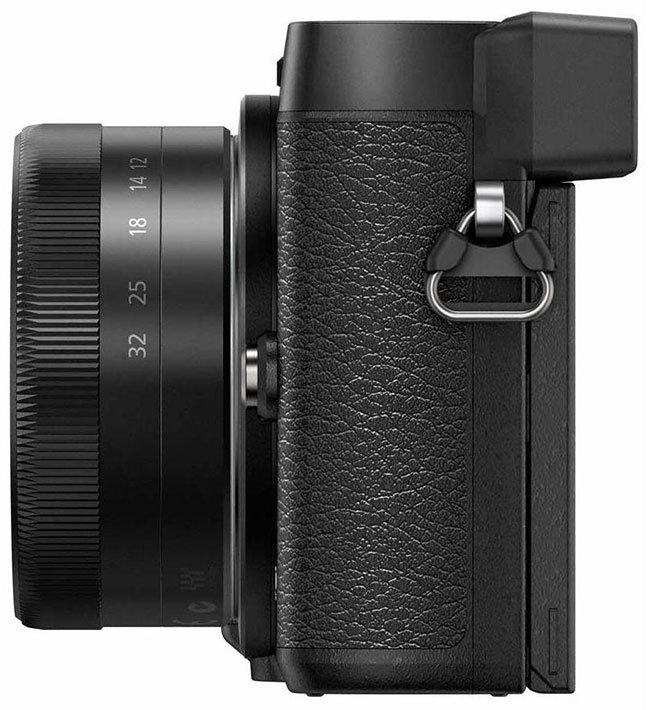
Who is the Panasonic LUMIX GX85 for?
The Panasonic LUMIX GX85 is fine for beginner and intermediate-level photographers. The design is not overly simplified but it is intuitive. And the camera has a wealth of interesting features beyond the usual Scene modes. Professional photographers will find it to be a great casual camera that happens to be pocket sized. But it doesn’t have many extra customizable buttons and dials. Most professionals prefer to use on these on the job to speed up functions and menu access. They will find the G85 to be a better choice. The GX85’s sensor stabilization combined with its DFD autofocus system make it a fantastic handheld portrait camera. Wedding and other event photographers that regularly take pictures of people will find these traits very useful.
Sample Images
Conclusion
The Panasonic LUMIX GX85 is a great camera with excellent image quality. The clever 4K Photo options allow it to easily capture moments that could otherwise be missed. The 4K video is also useful for regular recording. But a microphone or headphone port would make it much more attractive to videographers. Sensor-based image stabilization in a camera this inexpensive is fantastic. And the Micro 4/3rds sensor gives it cross compatibility with Olympus Micro 4/3rds lenses. But remember that Dual IS does not always work with non-Panasonic lenses. The G85 and E-M10 Mark III do give the GX85 a run for the money. But overall, the LUMIX GX85 provides a wealth of fine features in a compact frame.



















